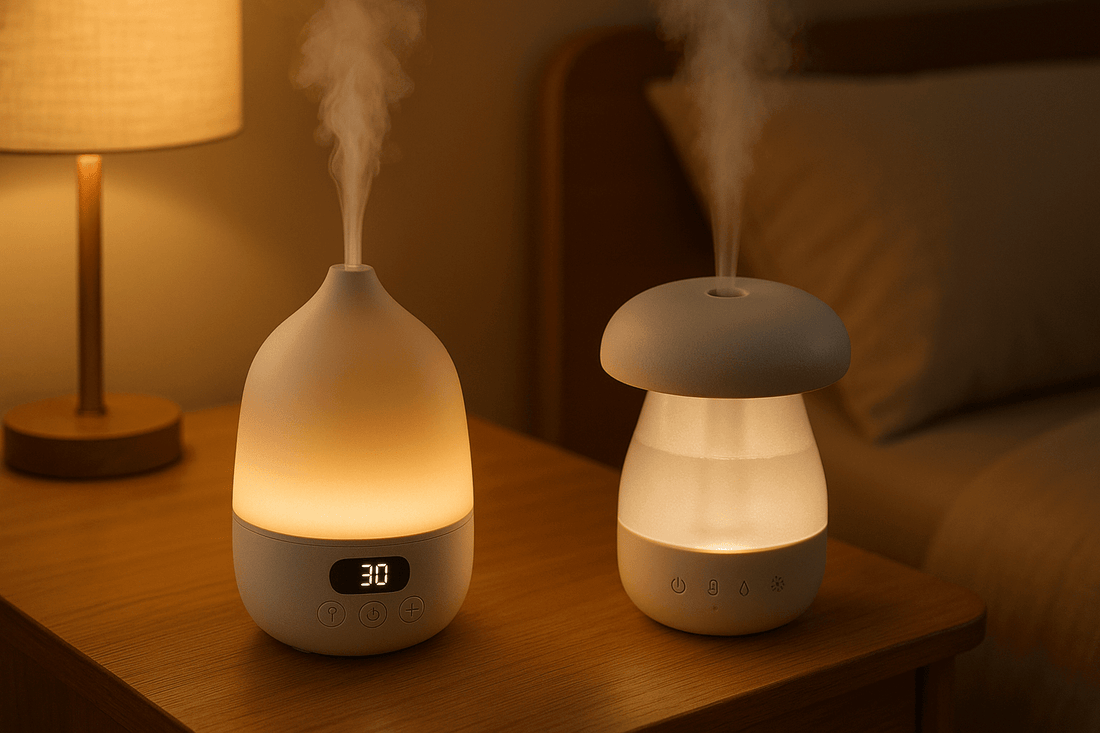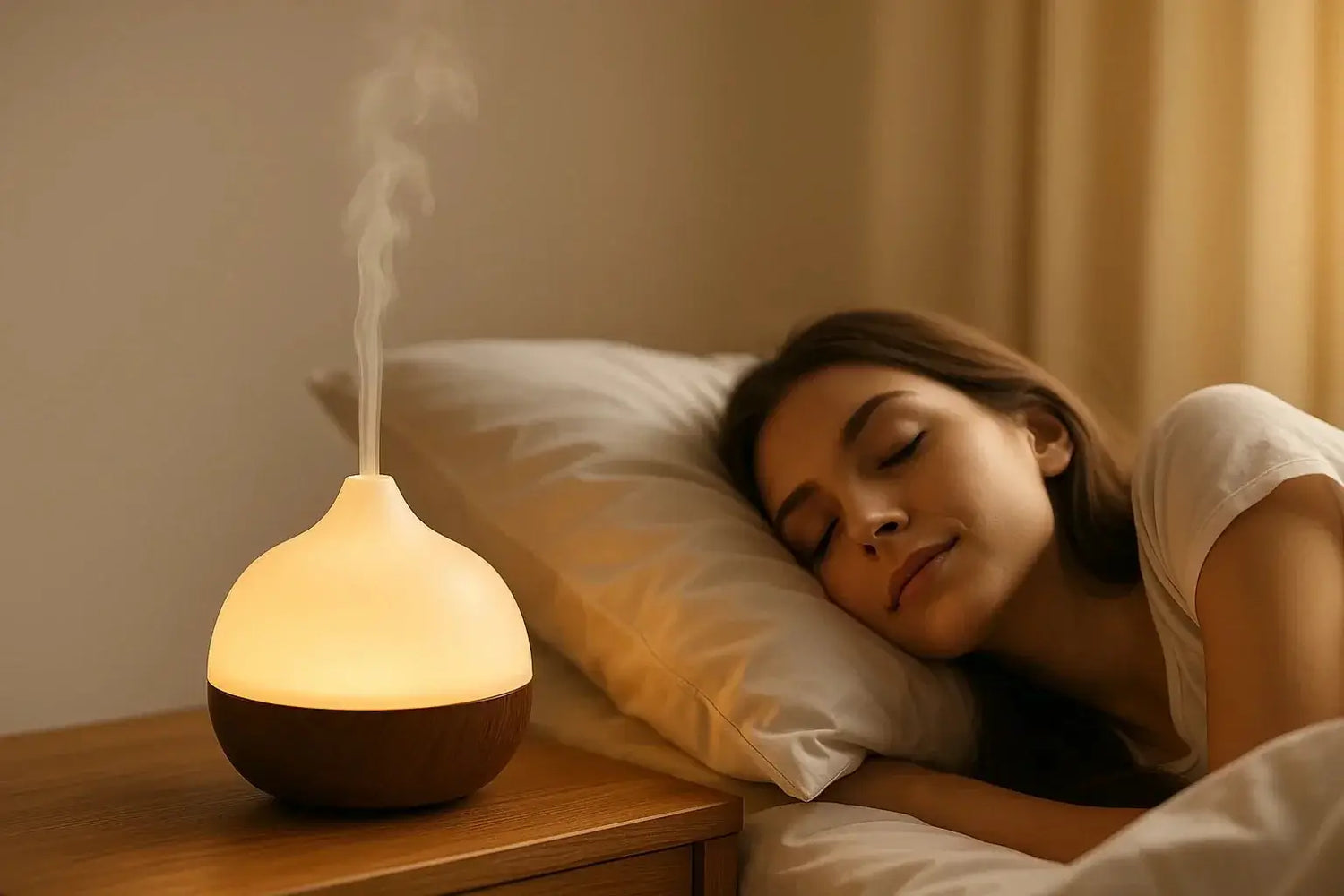
The Smart Sleep Device Playbook: Diffuser vs Humidifier for Every Bedroom Size
Share
Looking for the right smart sleep device to calm your nights? Diffusers and humidifiers can both help you unwind—but they do different jobs. This playbook gives you the quick pick for every bedroom size, exact timers, oil drops, and simple placements so you fall asleep faster—without over-humidifying.
Quick pick a smart sleep device in (60 seconds)
| Room | Device | Timer/Runtime | Oil drops | Placement |
|---|---|---|---|---|
| Small (≤12 m²) | Diffuser (calm ritual) | 60–90 min before bed | 2–3 drops | Chest height, 1–2 m from bed |
| Medium (12–20 m²) | Diffuser + Humidifier | Diffuser 90–120 min; Humidifier low/auto overnight | 3–4 drops (diffuser only) | Opposite corners; mist away from face |
| Large (20–30 m²) | Humidifier (comfort all night) | Low/auto overnight | — | Raised surface, away from walls/electronics |
TL;DR: Dry air → humidifier. Busy mind → diffuser. Many sleepers use both: humidifier for comfort, diffuser for calm.
Pick by scenario
“AC makes my room dry.”
Run a cool-mist humidifier on low/auto overnight to keep humidity comfortable (about 40–50%). Place it on a stable surface, 1–2 m from the bed, with mist aimed away from walls and electronics.
“I can’t switch off at night.”
Use the Deep-Sleep Diffuser for 60–120 minutes before bed. Add 2–4 drops of lavender or chamomile, use the amber light, and let your room soften as you wind down.
“Shared room—noise and light matter.”
Choose whisper-quiet devices with light-off options. Start with just 2 drops in the diffuser and keep both devices 1–2 m from faces to avoid over-scenting or damp sheets.
Exact setup (so it just works)
- Distance: Place devices at chest height, 1–2 m from your pillow.
- Angles: Aim mist away from faces, walls, and electronics.
- Timers: Diffuser 60–120 min; humidifier low/auto overnight.
- Cleaning: Rinse tanks after use; wipe plates weekly. Fresh water only.
- Safety: Choose auto-off models so you can relax without worry.


Smart Sleep Device FAQs
Is it OK to sleep with a humidifier on?
How many drops of oil in a diffuser?
Can I place a diffuser next to my bed?
Bottom line: Dry air? Choose a humidifier. Need a calming ritual? Choose a diffuser. Want comfort and calm? Use both—then drift off naturally.





